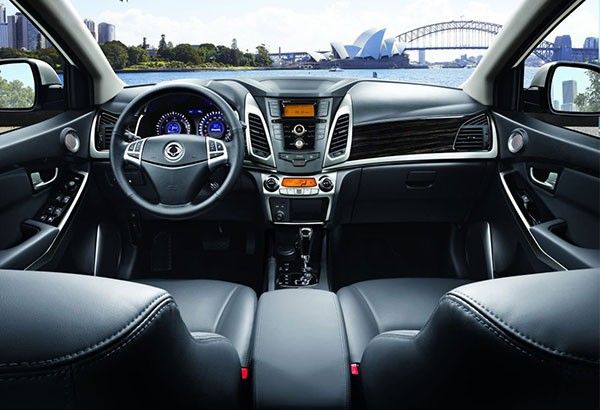TEST-Ssangyong Korando EXD

A welcome new crossover contender
MANILA, Philippines – One of the hardest parts of entering the Philippine automotive market—if you’re a new brand—is that the market is already saturated with so many players. Hard to believe that, as recently as the mid-80’s, we only had three brands (Toyota, Nissan and Mitsubishi). Now we have more car brands available locally than America does. That’s a huge disparity considering Filipinos buy 300,000 new cars a year while Americans buy a million new cars a month. Even considering our astronomical sales growth in recent months and years, that’s still a relatively small market for so many new names.
And that’s the scenario “new” Korean entrant Ssangyong is finding themselves in. New in quotation marks because Ssangyong did do business in the country for over a decade from the 90’s to the late 2000’s. You’d be more familiar with them if you ever owned an MB-100 “Mercedes-Benz” van or an MB Musso SUV in the 90’s. Or the quirky-styled Ssangyongs SUV’s from the early to late 2000’s.
The distributor of the brand then has gone and is now replaced by the Berjaya Group, which also imports Mazdas into this country. Two things going for the “new” Ssangyong: One, Korean cars have largely been accepted into the mainstream and are constantly being compared to their Japanese rivals. Two, the Ssangyongs of today are much more contemporary in design. They might not, yet, have an established design language like Hyundai and Kia, but the cars are now certainly good-looking.
More importantly, build quality and fit and finish, inside and out, are at par with any brand, be it Japanese, American, or European.
Which brings me to the P1,250,000 Korando, Ssangyong’s contender in the compact crossover wars. It’s a spacious and well-built compact crossover that seats five and is powered by a gasoline or diesel motor. Few cars in its category offer those engine options.
I got to try the very fuel-frugal 2.0-liter diesel of the front-wheel drive EXD (there is also an all-wheel drive ELX flagship variant) and it surprised me with its level of refinement and energetic performance (from a generous 174hp and 360Nm of torque). Diesel clatter is well-suppressed while the vehicle strikes a perfect balance between a comfortable ride and responsive handling.
The modern motor is mated to an equally modern 6-pseed automatic transmission, which delivers smooth and responsive shifts. Ride quality on our fast-deteriorating roads is exemplary while handling from its front MacPherson struts and rear multi-links can give other compact SUV’s a run for their money. Handling (and looks) are further abetted by meaty 225/55R-18 tires on handsome 18-inch alloy wheels.
Inside, space is generous (thanks partly to its reasonably long 2,650mm wheelbase) while build quality and materials are—again—right up there with its international rivals.
Other features include dual front, side, curtain airbags; ABS with EBD; electronic stability program; active rollover protection; hill start assist; daytime running lights; automatic climate control; 7-inch touchscreen RDS 6-speaker audio system with iPod & Bluetooth connectivity.
The Ssangyong Korando competes with established stars such as the Honda HR-V, Subaru XV, Mitsubishi ASX, Ford Escape, Chevy Captiva and, of course, the Kia Sportage and Hyundai Tucson. That’s a stellar group of rivals. Thankfully, the Korando has what it takes—price-wise, looks-wise, and specs-wise—to compete in that class. It’s just a matter for Ssangyong’s sales and marketing teams to get the word out about this solid contender.
If you’re one of those brave early adopters who are confident about Korean quality and want to stand out from the rest with a good-looking, solid-performing and well-built new ride, then the Ssangyong Korando might just be your cup of tea.



- Latest


























